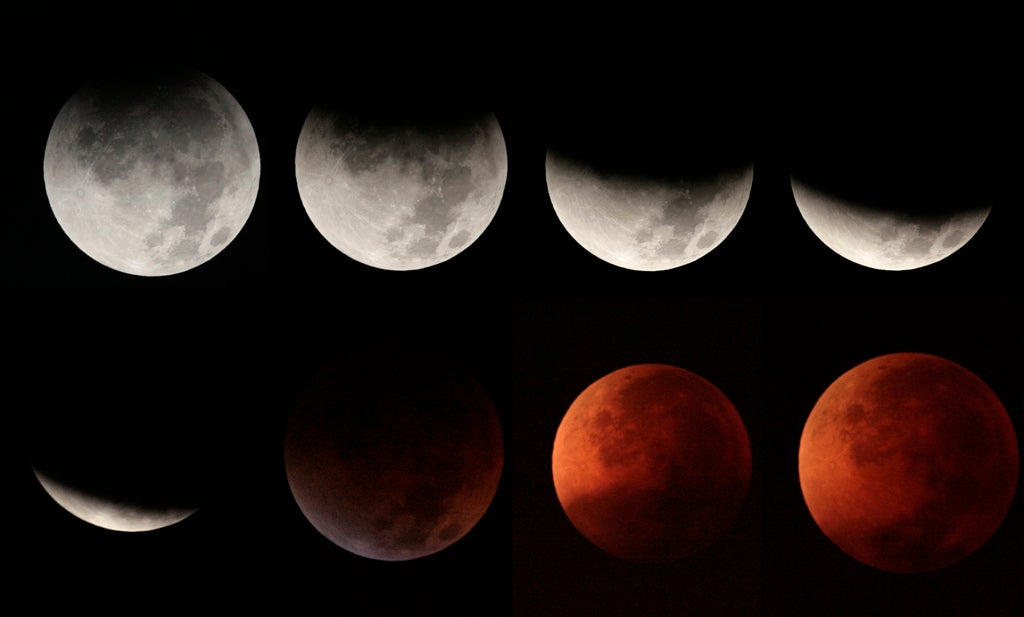Total lunar eclipse 2014: Where can I see the blood moon? Live-streaming and more
The first eclipse in the upcoming tetrad won't be visible from the UK - but live-streamed footage of the 'blood moon' will be available below

Your support helps us to tell the story
From reproductive rights to climate change to Big Tech, The Independent is on the ground when the story is developing. Whether it's investigating the financials of Elon Musk's pro-Trump PAC or producing our latest documentary, 'The A Word', which shines a light on the American women fighting for reproductive rights, we know how important it is to parse out the facts from the messaging.
At such a critical moment in US history, we need reporters on the ground. Your donation allows us to keep sending journalists to speak to both sides of the story.
The Independent is trusted by Americans across the entire political spectrum. And unlike many other quality news outlets, we choose not to lock Americans out of our reporting and analysis with paywalls. We believe quality journalism should be available to everyone, paid for by those who can afford it.
Your support makes all the difference.The first total lunar eclipse of 2014 will occur on 14-15 April, but unfortunately for UK stargazers it’ll only be visible in North and South America.
For those parts of the Earth in daylight during the eclipse , Nasa will be live-streaming the event with additional imagery available through the Slooh camera – a robotic telescope service accessible over the web (see below for video).
The eclipse will be the first in a series of four total eclipses taking place at regular six month intervals - an astronomical event known as a ‘lunar tetrad’.
Normally, lunar eclipses only take place about twice a year and even then they're rarely total, making this tetrad an unusual event. During a lunar eclipse the Moon does not completely disappear from sight (as the Sun does during a total solar eclipse) but it instead moves into the darkest part of Earth’s shadow known as the umbra.
This means that the Earth blocks all direct sunlight from reflecting off the Moon’s surface and instead the light passes through the Earth’s atmosphere. It’s this that gives the Moon a reddy colouring during a total eclipse as the Earth’s atmosphere scatters others parts of the light spectrum.
As astronomy site EarthSky explains, imagine yourself standing on the lunar surface looking back at the Earth with the sun behind it. You would see that the rim of the planet lit by the light of the Sun streaming through the atmosphere: effectively, you’d be watching every single sunrise and sunset on Earth simultaneously. It’s this red light that is then reflected off the surface of Moon.
This phenomenon has led to the popularity of the phrase ‘blood moon’. It’s a legitimate (if melodramatic) term, but it’s unfortunately become associated with a certain sort of conspiracy theory associating the upcoming tetrad with all manner of catastrophic events. We’ve written a guide to all this here.
See below the livestream of the April 14-15 lunar eclipse:
Join our commenting forum
Join thought-provoking conversations, follow other Independent readers and see their replies
Comments